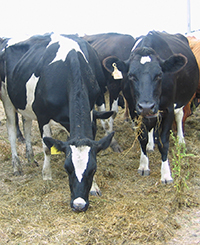
 Background
BackgroundA number of completed PICCC projects have shown that nitrification inhibitors can reduce nitrous oxide emissions in south eastern farming systems by 8-83% compared to typical fertiliser applications. A series of new projects funded through the Carbon Farming Futures program are now investigating the use of inhibitors under commercial production conditions.
This project is trialling the use of nitrogen fertiliser amended with the nitrification inhibitor 3,4-dimethyl pyrazole phosphate (DMPP) as a method to directly reduce on-farm nitrous oxide emissions from dairy cattle pastures and broadacre crops in north east Victoria. Researchers are aiming to determine if increased costs associated with DMPP application are balanced by yield increases achieved through increases in nitrogen use efficiency.
This project team are measuring nitrous oxide emissions and crop / pasture / milk yield on 10 conventional dairy and broadacre cropping properties in north east Victoria. Trial sites on each farm are comparing ‘business-as-usual’ farming practices with the DMPP-amended urea fertiliser applied at standard application rates. Across the three-year trial, nitrous oxide emissions will be measured using automatic and manual chambers, while data on yield, soil nitrogen and climate will be collected.
The on-farm trials are being conducted through collaborations between the Murray Goulburn Cooperative Co. Limited and landowners. Scientists from the University of Melbourne are leading the collection and processing of emissions data. Murray Goulburn are managing the sampling, collecting the production data and using their extension networks across Victoria to communicate the study’s outcomes via a farmer outreach program.
Data have now been collected from 10 commercial farms near Kiewa in north east Victoria over two growing seasons (2014 and 2015).
Data from the first year of the trial appeared to show that ENTEC® increased plant yield on both the dairy and broadacre farms. Observational data from 2015 suggested again that yields were higher on the cropping farms when treated with ENTEC®. However on the dairy pastures, ‘plot site’ appears to have had a significant influence on pasture yield which may have contributed to yield differences attributed to ENTEC® in 2014.
There was no discernible effect of ENTEC® on nitrous oxide emissions from either pastures or crops in 2014, and emissions data from 2015 are currently being analysed.
A trial is in progress for 2016, and a full statistical analysis will be conducted with all three years of data following the end of the 2016 growing season to assess the overall effect of the inhibitor treatment on plant yield and nitrous oxide emissions.